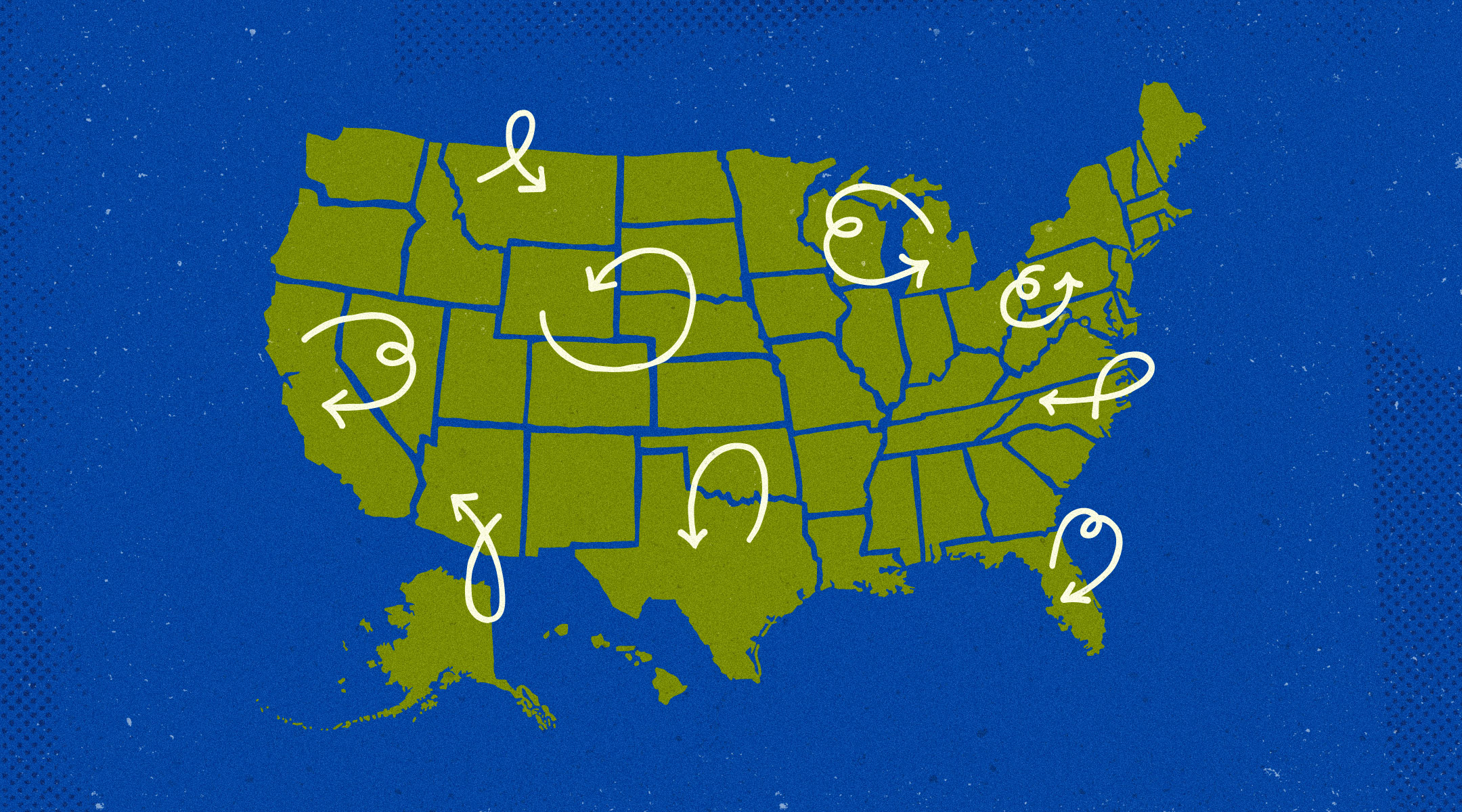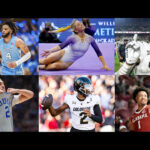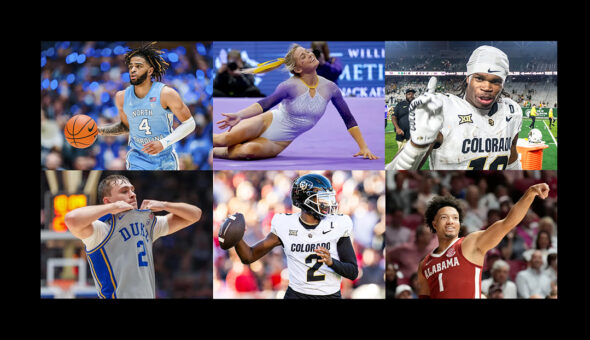Numerous studies* have attempted to identify the reasons students leave their home state to pursue college elsewhere. The cost of in-state tuition, state investment in higher education, perceived measures of quality – such as academic program reputation, institutional selectivity, small class size and high quality faculty – all have been empirically linked to student migration. Variables that have not been studied extensively include campus proximity to home for reasons of safety, family connection and comfort of familiarities. These variables may, indeed, shape migration patterns and marketing strategies in a post-COVID world.
The Trouble with Negative Net Student Migration
A key metric related to student migration that may come into greater focus in a post-COVID world is net student migration, the difference between those who migrate out of the state for college and those who migrate into the state for college. Just as student outmigration patterns vary across the country, so do the totals for net student migration. For example, and this maybe surprising to those beyond the tri-state area, New Jersey is the No. 1 net exporter of college students in the country. In fall 2018, 31,839 New Jersey students enrolled out of state for college, while 5,199 students migrated to New Jersey from another state. As a result, New Jersey had a negative net migration of 26, 640 students.
In one month, the results of a safety-focused ad campaign more than doubled the positive results of our traditional campaign, which focused on academics and amenities.
A dozen other states have negative net migration patterns. In those states, those numbers include high school students educated in-state who leave to pursue education, and, in many cases, remain out of state and contribute elsewhere economically, intellectually and socially. This loss, often referred to as the “brain drain,” plagues states where negative net migration is significant. There are economic benefits to keeping students in-state, not only for college, but for the contributions they will make as they establish lives after graduation.
Changing the Marketing Mindset
In New Jersey and those 12 other states, messaging to in-state students often is delicate. At Ramapo College, where I work, we like to highlight the ability to get home for mom’s meatloaf on Sunday nights, if desired, but we also want to avoid over-highlighting proximity when students are more inclined to look for a school farther away. We try to counter the commuter school, or “suitcase school,” stereotype that often follows public regional colleges that draw heavily from in-state students. While the affordability of in-state tuition is always contained in our value message, we tend to focus on other factors in our marketing efforts that rival those of our out-of-state competitors, like amenities, class size, majors and student clubs and organizations. But, what if COVID has added a variable that we have neglected: the value and safety of being close to home and loved ones?
There are economic benefits to keeping students in-state, not only for college, but for the contributions they will make as they establish lives after graduation.
We recently decided to test this theory and added a dimension to an existing social media campaign focused on driving incoming student applications. In addition to our campaigns that focused on having the No. 1 ranked residence halls in the state and the access to internship opportunities afforded by our location, we added a third string of messages focused solely on safety and choosing a college close to home. We considered this our A/B/C test of the theory. Does the market want to see our usual marketing campaign? Or does a campaign focused solely on safety capture more attention?
In one month, the results of the safety campaign more than doubled the positive results of our traditional campaign, which focused on academics and amenities. While the results were not all that surprising, given that national daily focus on COVID, mask wearing and safe steps, it did tell us that the market was more interested in learning what makes us safe, rather than what makes us traditional.
The question before us in enrollment and marketing now is whether it is a product of the times and current events or whether this messaging is going to be central to prospective student messaging and yield campaigns for the foreseeable future. In fact, one might argue that the recent coverage of eight members of New York Yankees testing positive for COVID-19 despite being vaccinated is yet another reminder that while conditions improve, the continued presence of the virus is very real. Can we really decouple safety from traditional messaging?
The Opportunity for Higher Ed Marketers
If this change in mindset, especially for states that are used to competing hard to keep their own students in-state, is here to stay, here are a few things higher education marketers and enrollment professionals can do:
- Incorporate a great focus on health and safety into your messaging. While national news of a “return to normal” dominates fall 2021 announcements, parents and students still want to know what precautions are going to be in place to accompany that back-to- normal feeling they keep reading about in your announcements. What does COVID testing look like on your campus? What does a socially distanced classroom look like? Show them.
- Leverage proximity to home. No marketing campaign wants to lead with “You’ll be close enough to get home if there’s another quarantine,” but there are ways we can deliver the message. Providing campus tour guides and ambassadors with scripts and messaging points about the value of proximity in a pandemic and how being close mattered to them , embedding maps and directions into your messaging and highlighting commuters and commuter programming are ways to do this. Commuters, in particular, often are a neglected group in our ambassador programs. As a population, they do not spend as much time on campus and are, on average, involved in fewer clubs and organizations. Find their stories from the past year and promote the value they felt in being a commuter during the pandemic.
- Target parent messaging around safety and reopening. We need to find ways to be intentional about engaging parents in the conversations about health and safety. Parent forums, targeted messages and more parent-oriented social media platforms can help drive the visual message on safety. Those visual messages need to be accompanied by details on quarantine protocols and testing and student health services. Incorporating how we support students, in the midst of COVID, is now a step that should be featured in communications.
Daily media reports fill our television screens and social media feeds with a message of cautious optimism. Vaccinations are widely available, mask wearing is being phased out for vaccinated individuals and the finish line is in sight for many. But as virus strains proliferate and we are reminded that vaccinated individuals may still test positive and spread the virus to others, we know another autumn spike isn’t impossible; we’re not out of the woods, and we don’t know what lies ahead. I suspect that the divide between hope and reality may not only shape behaviors this summer, but may also shape student migration patterns for some time to come.
*References for works cited in the section starting as “Numerous studies”:
Baryla, E. A., & Dotterwich, D. (2001). Student migration: Do significant factors vary by region? Education Economics, 9(3), 269-280. doi:10.1080/09645290110086135
Mak, J., & Moncur, J. E. T. (2002). Interstate migration of college students. Annals of Regional Science, 37, 603-612. doi:10.1007/s00168-003-0130-4
Mixon, F.G., & Hsing, Y. (1994). College student migration and human capital theory: A research note. Education Economics, 2(1), 65-73. doi:10.1080/09645299400000005
Perna, L. W., & Titus, M. A. (2004). Understanding differences in the choice of college attended: The role of state public policies. The Review of Higher Education, 27(4) 501-525 Project MUSE, doi:10.1353/rhe.2004.0020
Tuckman, H. P. (1970). Determinants of college student migration. Southern Economic Journal, 27(2), 184-189. doi:10.2307/1056128
Zhang, L., & Ness, E. (2010). Does state merit-based aid stem brain drain? Educational Evaluation and Policy Analysis, 32(2), 143-165. doi:10.3102/016237309359683








